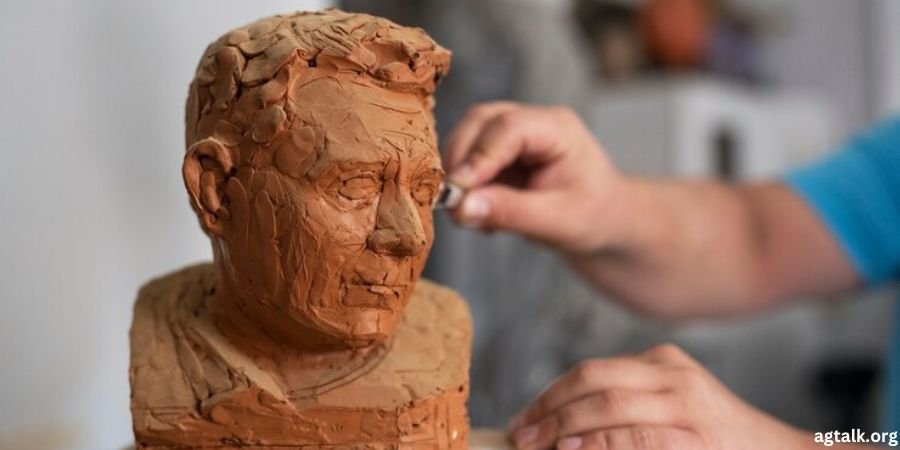Ancient Artz: A Journey Through Time and Culture
Ancient artz offers a fascinating glimpse into the cultures, beliefs, and daily lives of early civilizations. These artistic creations, spanning from cave paintings to monumental sculptures, serve as a visual record of humanity’s earliest expressions of creativity and spirituality. Through ancient art, we can trace the development of artistic techniques and materials, as well as the symbolic and religious themes that shaped these societies. From the intricate carvings of Mesopotamia to the monumental pyramids of Egypt, ancient artz reflects the diversity and complexity of the human experience. Understanding these artistic legacies not only deepens our knowledge of history but also connects us to the shared heritage of all humanity. Whether through sacred temples or detailed pottery, ancient art continues to inspire and influence modern art forms, proving its timeless impact on culture and society.
The Evolution of Early Ancient artz Traditions
The evolution of ancient artz date back to prehistoric times when early humans began expressing themselves through creative means. The earliest forms of art can be seen in cave paintings, carvings, and rudimentary sculptures, many of which were found in places like Lascaux in France and Altamira in Spain. These early artworks often depicted animals, hunting scenes, and symbolic figures, possibly used for religious or ritualistic purposes. As humans evolved, so did their artistic expressions, with the development of more advanced tools and techniques. Ancient artz civilizations, such as those in Mesopotamia, Egypt, and Greece, began creating more intricate and symbolic works, including pottery, sculptures, and monumental architecture. These early creations laid the foundation for the rich and diverse artistic traditions that would follow, demonstrating the universal human desire to communicate and preserve cultural identity through art.
The Beginnings of Ancient Artz Expression
Artistic expression has been an integral part of human existence since prehistoric times. The earliest known examples of human art are the famous cave paintings found in locations such as Lascaux in France and Altamira in Spain. These paintings, dating back over 30,000 years, depict animals, hunting scenes, and symbolic forms, offering us a glimpse into the minds of our prehistoric ancestors. Carvings and small sculptures, such as the Venus figurines, also emerged during this period, suggesting that early humans used art to represent fertility, life, and spirituality.
These early forms of artistic expression were often created with materials available in nature, such as ochre, charcoal, and animal bones. This art served both functional and symbolic purposes—possibly used in rituals, storytelling, or as a way to mark territory. The intricate detail in these artworks shows a level of sophistication that challenges the common perception of prehistoric people as primitive.
The Art of Ancient Egypt
Ancient Egyptian art is one of the most well-recognized and enduring forms of ancient artz. Egyptian art was deeply tied to religion and the afterlife, and much of what we know about this civilization comes from the art found in tombs, temples, and monuments. The Egyptians were masters of monumental architecture, creating structures like the pyramids of Giza and the Great Sphinx. These structures were not just architectural feats; they were also canvases for artwork, with intricate carvings and hieroglyphics that told stories of gods, kings, and the journey to the afterlife.
One of the most famous elements of Egyptian art is its strict adherence to form and symbolism. Artists used a highly stylized and formulaic approach, with figures often shown in profile and important individuals depicted larger than others to signify their status. The use of vibrant colors and symbolic imagery, such as the ankh (a symbol of life) and the scarab beetle (symbolizing rebirth), was also prevalent.
Symbolism in Ancient Artz
Symbolism plays a significant role in ancient artz, often conveying deeper meanings and cultural values. Early civilizations used symbolic elements in their artwork to represent concepts such as power, divinity, and nature. For instance, ancient Egyptian art frequently employed symbols like the ankh for eternal life and the scarab beetle for rebirth and regeneration. Similarly, Mesopotamian and Greek art incorporated mythological figures to express their beliefs about the gods and the universe. This rich use of symbolism in ancient artz reflects not only the spiritual and philosophical beliefs of these cultures but also their understanding of the human condition.
Materials and Techniques in Ancient Artz
The materials and techniques used in creating ancient artz varied greatly across civilizations, influencing the style and preservation of the artwork. Prehistoric artists often utilized natural pigments and tools made from stone or bone to craft their cave paintings and carvings. As civilizations advanced, they began to work with more sophisticated materials such as bronze, gold, and marble, which were used to create sculptures, jewelry, and monumental architecture. Techniques like fresco painting, pottery wheel crafting, and metal casting were developed by cultures like the Greeks, Romans, and Chinese, showcasing their mastery of art production and innovation. These techniques laid the foundation for many of the artistic methods still in use today.
Religious Themes in Ancient Artz
Religion was a central theme in the artz of many ancient cultures, with artistic creations often serving as expressions of devotion and reverence for the divine. In cultures like ancient Egypt, Greece, and India, art was closely tied to religious rituals and beliefs. Temples, statues of gods, and religious relics were adorned with intricate carvings, reliefs, and paintings that depicted deities, spiritual stories, and rituals. For example, ancient artz Hindu and Buddhist temples in India were elaborately decorated with scenes from sacred texts, while Greek temples housed statues of gods like Zeus and Athena. Through this, ancient artz became a medium to connect the earthly with the divine, providing insights into the spiritual lives of these early societies.
Ancient Mesopotamian Art
Mesopotamia, known as the “Cradle of Civilization,” gave birth to some of the earliest known artworks. The art of ancient Mesopotamia, which includes the cultures of Sumer, Akkad, Babylon, and Assyria, was primarily focused on religious and royal themes. Mesopotamian artists created a wide variety of works, including stone reliefs, pottery, and bronze statues.
One of the most notable forms of Mesopotamian art is the bas-relief sculptures found in palaces and temples. These sculptures depicted gods, kings, and warriors in scenes of battle or worship. Mesopotamian art was often used to demonstrate the power and authority of rulers, with large-scale depictions of military conquests and divine protection.
Ziggurats, large pyramid-like structures, were also a significant part of Mesopotamian art and architecture. These towering temples served as places of worship and were decorated with intricate carvings and mosaics. The famous Ishtar Gate of Babylon, with its vibrant blue tiles and reliefs of lions and dragons, is a stunning example of Mesopotamian craftsmanship and artistry.
The Artistic Legacy of Ancient Greece
Ancient artz Greece is often considered the birthplace of Western art. The Greeks made enormous contributions to the world of art, particularly in the fields of sculpture, pottery, and architecture. Greek art evolved over several centuries, from the geometric designs of the early Greek period to the highly realistic and expressive sculptures of the Classical era.
One of the most important achievements of Greek art is the development of naturalism in sculpture. Greek sculptors sought to depict the human body in its most idealized and perfect form, resulting in some of the most famous statues in history, such as the Venus de Milo and the Discobolus. These sculptures exemplified the Greek ideals of beauty, balance, and harmony.
In addition to their mastery of sculpture, the Greeks also excelled in pottery. Greek vases, often decorated with intricate scenes of mythology, daily life, and athletic competition, are prized for their aesthetic beauty and technical precision. Greek artists developed a unique black-figure and red-figure pottery style that allowed for detailed and dynamic depictions of the human figure.
Roman Art and Architecture
While much of Roman art was influenced by the Greeks, the Romans made their own significant contributions to the artistic world. Roman art was more practical and utilitarian than Greek art, often serving as a means of displaying political power and celebrating military victories. Roman artists excelled in the creation of mosaics, frescoes, and sculptures that depicted historical events, emperors, and deities.
One of the most enduring legacies of Roman art is its architecture. The Romans were master builders, creating monumental structures like the Colosseum, the Pantheon, and aqueducts that still stand today. These buildings were not only functional but also decorated with elaborate artwork, including columns, reliefs, and statues.
Roman portraiture is another significant aspect of their ancient artz legacy. Unlike the idealized figures of Greek sculpture, Roman portraiture was more realistic, often depicting individuals with their imperfections and aging features. This focus on realism helped to convey the personalities and accomplishments of the subjects.
Art of Ancient India
Ancient Indian art is rich in spiritual symbolism and often reflects the religious beliefs of the time. Indian art, particularly sculpture and temple carvings, is heavily influenced by Hinduism, Buddhism, and Jainism. Temples were adorned with intricate carvings of gods, goddesses, and mythological creatures, each imbued with deep symbolic meaning, One of the most iconic forms of ancient Indian art is the stupa, a dome-shaped structure used in Buddhist worship. Stupas were often covered in elaborate carvings and reliefs that depicted the life of the Buddha and other spiritual stories. The art of ancient India is characterized by its attention to detail and its focus on the divine, with each element carefully crafted to convey religious themes.
Chinese Art and Calligraphy
China has one of the oldest and most continuous artistic traditions in the world. Ancient Chinese art is deeply connected to philosophy, spirituality, and nature. One of the most important forms of Chinese art is calligraphy, the practice of writing as an artistic expression. Chinese calligraphy is not just a form of communication but also a way of capturing the beauty of written characters in a harmonious and balanced way, Painting is another key component of ancient Chinese art, with many works focusing on landscapes, animals, and scenes from nature. These paintings often reflected Taoist and Confucian ideals, emphasizing the harmony between humans and the natural world, Porcelain, particularly the famous blue-and-white porcelain, became a symbol of Chinese craftsmanship. These delicate and finely crafted ceramics were highly prized both within China and by international traders.
The Influence of Ancient Artz on Modern Culture
The legacy of ancient artz is still felt in modern times. Many contemporary artists draw inspiration from the techniques, symbols, and themes of ancient civilizations. For example, the principles of balance, proportion, and symmetry found in Greek and Roman art continue to influence modern architecture and sculpture, In addition, ancient artz is studied and preserved in museums around the world, allowing people to connect with the past and understand the cultural achievements of early civilizations. The study of ancient art also provides valuable insights into the history, politics, and religions of these cultures, helping us to better appreciate the complexity of human history.
Conclusion
Ancient artz is more than just a reflection of the past, It is a bridge connecting us to the thoughts, beliefs, and innovations of early societies. Each piece of art, from the simplest cave painting to the grandest monument, tells a story about the people who created it and the world they inhabited. By studying these ancient works, we gain a richer understanding of how art was used to communicate ideas, celebrate the divine, and express human emotions. The lasting impact of ancient artz on contemporary culture underscores its timeless value, reminding us that creativity and expression are central to the human experience across all ages. As we continue to explore and preserve these ancient treasures, we ensure that their stories will resonate with future generations.
Share this content:














Post Comment